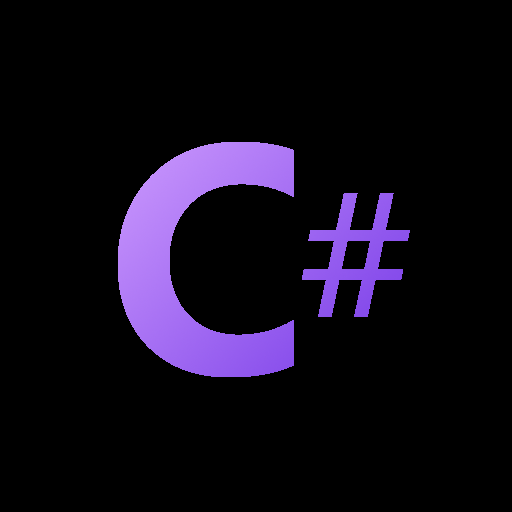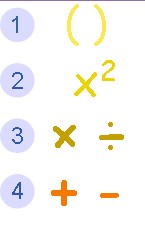And if you don’t then you can no longer claim they are still equal.
💡𝚂𝗆𝖺𝗋𝗍𝗆𝖺𝗇 𝙰𝗉𝗉𝗌📱
- 138 Posts
- 552 Comments

 11·13 hours ago
11·13 hours agoyou can substitute anywhere
And if you are rearranging algebra you have to do the exact same thing on both sides, always
This isn’t about limits of accuracy
According to who? Where does it say what it’s about? It doesn’t.
please show me how basic arithmetic can make 0.999
You still haven’t shown why you’re limiting yourself to basic arithmetic. There isn’t anything at all in the meme to indicate it’s about basic arithmetic only. It’s just some Maths statements with no context given.
then a correct use of the system must be applicable to everything, right?
Different systems for different applications. Sometimes multiple systems for one problem (e.g. proofs).
You shouldn’t need a new system like algebra to be correct, right?
Limits of accuracy isn’t algebra.

 2·17 hours ago
2·17 hours agoVersion 5 of a software, device, vehicle or such isn’t necessarily better than version 4
Yep, I can attest to that! I used to play Minesweeper Adventure version. Then Microsoft decided to do a complete rewrite and literally ruined the game. It was way slower and way buggier, and on top of that they also lost all my progress. So, well done Microsoft - now instead of seeing more ads (which was undoubtedly why they did the rewrite) I now don’t see ANY ads (because the game is just horrible now and not worth playing anymore, even if it didn’t have any ads!).
not taught yet
What do you mean not taught yet? There’s nothing in the meme to indicate this is a primary school problem. In fact it explicitly has a picture of an adult, so high school Maths is absolutely on the table.
There is no method by which basic arithmetic and decimal notation can turn 0.999… into 1.
In high school we teach that they are the same thing. i.e. limits of accuracy, 1 isn’t the same thing as 1.000…, but rather 1+/- some limit of accuracy (usually 1/2). Of course in programming it matters if you’re talking about an integer 1 or a floating point 1.
If someone uses these systems as they were taught, they will get told they’re wrong for doing so
The only people I’ve seen get things wrong is people not using the systems correctly (such as the alleged “proof” in this thread, which broke several rules of Maths and as such didn’t prove anything), and it’s a teacher’s job to point out how to use them correctly.
P.S.
“We do it like that, therefore, it is right”
Yep, Maths teachers do it right. :-)
You’re just another yank
BWAHAHAHA! I see you still didn’t learn to check facts first. 😂😂😂
X times 10 is 10x
10x is 9.9999999…
As I said, they didn’t substitute on both sides, only one, thus breaking the rules around rearranging algebra. Anything you do to one side you have to do to the other.
P.S. you proved my point
The only people who think there’s something wrong with PEMDAS are people who have forgotten one or more rules of Maths.
https://www.youtube.com/watch?v=lLCDca6dYpA
…oh wait I remember that
Well, you seem to have forgotten that the woman in that video isn’t a Maths teacher, which would explain why she’s forgotten the rules of The Distributive Law and Terms.
until you gave up
I didn’t give up, you did.
I suggest we don’t do it again but instead, you review the thread
I suggest you check some Maths textbooks, instead of listening to a Physics major.
those systems are giving an incorrect answer
When there’s an incorrect answer it’s because the user has made a mistake.
Instead of telling those people they’re wrong
They were wrong, and I told them where they went wrong (did something to one side of the equation and not the other).
Maths teachers are constantly wrong about everything
Very rarely wrong actually.
the abomination that is PEMDAS
The only people who think there’s something wrong with PEMDAS are people who have forgotten one or more rules of Maths.
you can prove it with math
Not a proof, just wrong. In the “(substitute 0.9999… = x)” step, it was only done to one side, not both (the left side would’ve become 9.99999), therefore wrong.

 5·19 days ago
5·19 days agoIt’s like going to a mathematics forum and declaring “Guyz I forgot to carry a 1, screw Maths.
You may think you’re joking, but as a Maths teacher I can tell you I have seen a lot of posts where someone makes a mistake with their signs, then uses their wrong answer to declare “The rules of Maths are wrong! Look - different answer!”. Yeah umm, try working on getting your arithmetic right first before claiming to have “proved” something. 😂

 1·22 days ago
1·22 days agoPersonally, I dislike the way the UI is declared and bound though (XAML)
You can write the MAUI UI in C#. No need to use XAML anywhere.

 2·23 days ago
2·23 days agoHe works at Microsoft

 11·1 month ago
11·1 month agoThe rules and the acronyms describe different things.
No, they don’t.
If you have to make more rules to say M and D are the same,
I didn’t make more rules - that’s the existing rules. Here’s one of many graphics on the topic which are easy to find on the internet…

…that’s one of the two examples you used?
Yes. Did you try looking for one and ramping it up to the most difficult level? I’m guessing not.
IT IS AMBIGUOUS IN THIS POST
No, it isn’t. Division before subtraction, always.
ALL EXAMPLES I HAVE SHOWN
None of those have been ambiguous either, as I have pointed out.
That is the problem at hand.
The problem is people not obeying the rules of Maths.
There is no real problem solving in trying to decipher poorly written shit
It’s not poorly written. It’s written the exact way you’d find it in any Maths textbook.

 11·1 month ago
11·1 month agoYou are adding more rules
I’m stating the existing rules.
If all that matters is higher orders first
I don’t even know what you mean by that. We have the acronyms as a reminder of the rules, as I already said.
I know operators apply to the numbers to their right.
If you know that then how did you get 2-2+2=-2?
With 2/22, you don’t know if it is 22/2, or 2/(2*2)
Yes you do - left associativity. i.e. there’s no brackets.
When you are dividing by numbers, you put them all in the denominator
Only the first term following a division goes in the denominator - left associativity.
BY CONVENTION, as I said. You don’t have to repeat what I said a second time.
I didn’t. You said it was a convention, and I corrected you that it’s a rule.
It’s not like you could have tried in your head different orders to combine 3 numbers.
addition first
2-2+2=4-2=2
subtraction first
2-2+2=-2+2+2=-2+4=2
left to right
2-2+2=0+2=2
3 different orders, all the same answer

















Right. So not according to the meme, which doesn’t tell us where the 0.999… comes from. Nor the 1 - could be an integer, floating point, or an estimation. Thanks for playing.